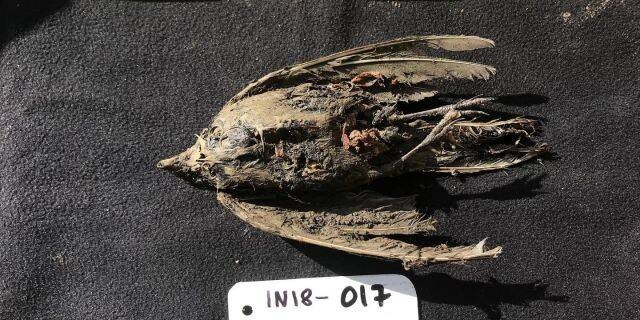
Scientists have recovered the DNA of a frozen bird found in Siberia and identified it as a female horned lark that died 46,000 years ago. The result of the study is significant in understanding the evolution of subspecies, and how mammoth steppe - the home of the frozen horned lark, transformed into tundra, forest and steppe at the end of the last Ice Age.
The well-preserved horned lark was found in the ground in Belaya Gora in Siberia in 2018 and was sent to researchers at the Center for Paleogenetics at Stockholm University and the Swedish Museum of Natural History. The researchers discovered that carcass is a female horned lark and may be from 44,000 to 49,000 years old. The study team noted that the frozen bird is the first bird carcass obtained from Ice Age permafrost deposits.
Understanding the Evolution of Subspecies
Genetic analysis of the frozen horned lark reveal that it is the joint ancestor of two subspecies of horned lark in Siberia, and in the steppe in Mongolia. Two subspecies of horned larks still exists until today.The discovery is significant in understanding how the diversity of subspecies evolves, said Nicolas Dussex, a researcher at the Department of Zoology at Stockholm University, in a statement.
The researchers' long-term goal is to map the complete genome of the 46,000 year-old lark and compare it with the genomes from all subspecies of horned larks to fully understand how the diversity of subspecies evolves.
Theory of Mammoth Steppe
The discovery also gave the researchers another significant milestone: it shed light on the context of the ecosystem the lark lived in during the last Ice Age. Horned larks for instance, inhabits open spaces, which describes the environment of mammoth steppe in Siberia at the time.
A theory believes that the mammoth steppe used to sprawl over Northern Europe and Asia during Ice Age. The steppe was the home of now extinct species such as wooly mammoth and wooly rhinoceros, and it had a variety of habitats such as steppe, tundra and coniferous forest. At the end of the Last Ice Age, the mammoth steppe transformed into three biotopes that still exists to this day: tundra in the north, taiga in the middle and steppe in the south.
The discovery of the frozen bird affirms this theory "since the diversification of the horned lark into these subspecies also happened at the same period the mammoth steppe disappeared", according to Love Dalén, Professor at the Swedish Museum of Natural History and research leader at the Centre for Palaeogenetics.
Dalen deems that the new laboratory facilities and intellectual environment at the Centre for Palaeogenetics will be helpful in mapping the genome of the frozen horned lark. The center also has access to samples from similar discovery in the same site in Siberia. Among those samples are the 18,000-year-old puppy called "Dogor" , which the researchers are trying to determine if it is wolf or dog, "Spartak", the 50,000-year-old cave lion cub, and a partially preserved wooly mammoth.
© 2026 NatureWorldNews.com All rights reserved. Do not reproduce without permission.





